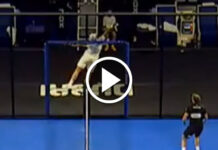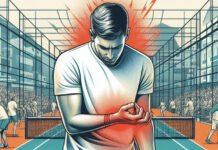Epicondylitis, commonly known as “tennis elbow,” is a condition that can affect padel players and is characterized by pain and tenderness on the outside of the elbow. This condition is often caused by repetitive wrist and arm motions, which can lead to overuse and strain of the muscles and tendons around the elbow joint. Here’s a guide on how to treat epicondylitis for padel players:
Rest and Ice: The first step in treating epicondylitis is to rest the affected arm and avoid activities that exacerbate the pain. Applying ice to the elbow can help reduce inflammation and alleviate pain.
Anti-inflammatory Medication: Over-the-counter anti-inflammatory medications, such as ibuprofen or naproxen, can help reduce pain and swelling. However, it’s important to use these medications as directed and consult with a healthcare professional if the pain persists.
Strengthening Exercises: Once the acute pain has subsided, gentle strengthening exercises can help rehabilitate the muscles and tendons around the elbow. These exercises should focus on improving flexibility and building strength without causing further strain.
Bracing or Strapping: Using a brace or strap specifically designed for epicondylitis can help support the elbow and reduce strain on the tendons during activities.
Technique Adjustment: Padel players should evaluate their playing technique, as improper form can contribute to the development of epicondylitis. Working with a coach to correct technique can prevent future injuries.
Equipment Check: The weight and grip size of the padel racket can impact the stress placed on the elbow. Players may benefit from using a racket with a lighter weight and a grip size that fits their hand comfortably.
Physical Therapy: If the condition does not improve with home treatment, consulting a physical therapist may be beneficial. A therapist can provide targeted exercises, manual therapy, and other treatments to promote healing.

































